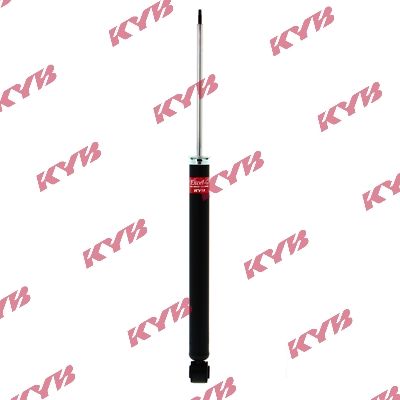-7%
REAR SHOCK ABSORBER FOR MAZDA DEMIO DJ/DL PRICE IN KENYA
REAR SHOCK ABSORBER FOR MAZDA 2/DEMIO DJ/DL SKYACTIV 3430045 KYB Price is Ksh 6,500 each in Nairobi Kenya.
Your vehicle’s shock absorbers play a crucial role in ensuring a smooth and controlled ride. Over time, however, they can wear out, affecting both the performance and safety of your vehicle. In this guide, we will delve into when and why you should consider changing your shock absorbers, exploring various aspects such as upgrades, routine maintenance, performance within design limits, and safety concerns.
Upgrade for Specific Needs:
If your vehicle frequently handles heavy loads, has top-heavy weight distribution, engages in towing, or encounters off-road conditions, it might be time to consider upgrading your shock absorbers. For such demanding usage, KYB offers high-performance “Monotube” shocks that are designed to exceed the capabilities of original equipment. These specialized shocks can provide enhanced stability and control, ensuring a safer driving experience under challenging conditions.
Routine Maintenance:
Shock absorbers endure significant movement, even on well-paved roads, cycling up to 1,900 times per mile. After approximately 50,000 miles, their performance gradually declines, impacting the vehicle’s handling and control. To maintain optimal performance, it is recommended to replace shocks and struts at this point, restoring the vehicle to its original state and potentially extending its overall lifespan. Regular replacement at the 50,000-mile mark is a proactive measure to prevent a decline in ride quality and to ensure consistent vehicle performance.
Non-Performance Within Design Limits:
Worn shocks and struts can compromise ride control, impairing the driver’s ability to manage the vehicle effectively. To identify and address these deteriorating conditions, regular road testing and inspections by a qualified technician are crucial. A comprehensive examination every 12,000 miles can help catch issues early on, preventing further damage and maintaining optimal performance within the design limits of the shock absorbers.
Replace Failed Shocks for Safety:
One of the most critical reasons to change your shock absorbers is safety. Shock or strut failures can pose a significant hazard, compromising your ability to control the vehicle. Signs of impending failure include excessive bounce, fluid leakage leading to dripping, cupped tire wear, and visible component damage during inspections. A completely failed shock or strut may exhibit more severe issues such as hydraulic fluid leaks, uneven tire wear, unsafe driving conditions, knocking noises, rattles, and vehicle swaying, necessitating constant steering corrections.
Conclusion:
In conclusion, the timely replacement of shock absorbers is crucial for maintaining both the performance and safety of your vehicle. Whether you’re looking to upgrade for specific needs, perform routine maintenance, address non-performance within design limits, or ensure safety by replacing failed shocks, being proactive in maintaining your vehicle’s suspension system is a wise investment. Regular inspections, adherence to recommended mileage intervals, and consideration of specialized shocks for specific driving conditions are key factors in preserving the overall health and longevity of your vehicle. Don’t overlook the importance of shock absorbers—keeping them in optimal condition ensures a smoother ride and, more importantly, contributes to the safety of both you and your passengers on the road.
- Non-Performance Within Design Limits:
- Worn shocks and struts can deteriorate ride control, impairing the driver’s ability to control the vehicle.
- Regular road testing and inspections (every 12,000 miles) by a qualified technician are recommended to identify and address these deteriorating conditions.
- Replace Failed Shocks for Safety:
- Shock or strut failures pose a safety hazard, compromising your ability to control the vehicle.
- Signs of failure include excessive bounce, fluid leakage leading to dripping, cupped tire wear, and visible component damage during inspections.
- A completely failed shock or strut may exhibit issues such as hydraulic fluid leaks, uneven tire wear, unsafe driving conditions, knocking noises, rattles, and vehicle swaying, necessitating constant steering corrections.



